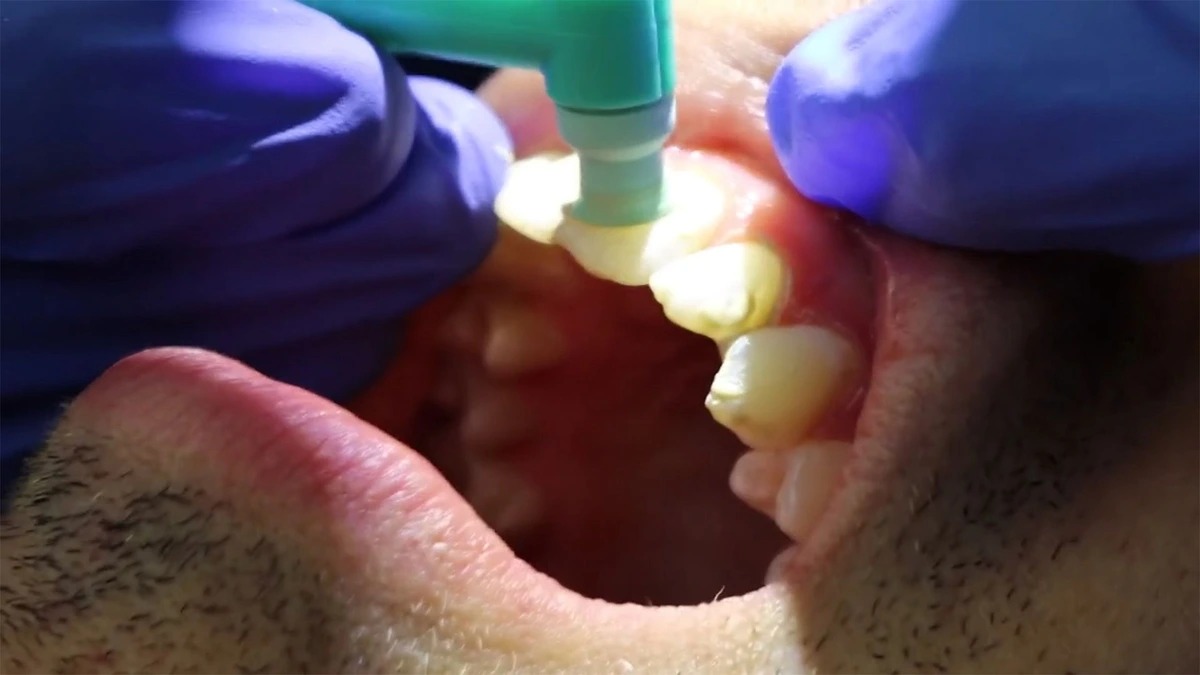Home>Finance>How Much Is A Kaiser Emergency Room Visit With Insurance?


Finance
How Much Is A Kaiser Emergency Room Visit With Insurance?
Published: November 6, 2023
Find out the cost of a Kaiser emergency room visit with insurance and manage your finances wisely. Stay informed and make smart financial decisions.
(Many of the links in this article redirect to a specific reviewed product. Your purchase of these products through affiliate links helps to generate commission for LiveWell, at no extra cost. Learn more)
Table of Contents
Introduction
When it comes to unexpected medical emergencies, having reliable health insurance coverage can provide a sense of security and financial protection. However, understanding the intricacies of your insurance plan and how it applies to emergency room visits can be overwhelming.
In this article, we will explore the cost of emergency room visits with Kaiser Permanente health insurance. Kaiser Permanente is a leading healthcare provider in the United States, known for its comprehensive coverage and quality care. By understanding the details of your insurance plan and the factors that can impact the cost of emergency room visits, you can better navigate your healthcare expenses.
We will delve into the various aspects of Kaiser emergency room visits, including coverage, copayments, deductibles, and out-of-pocket maximums. Additionally, we will provide valuable tips on how to reduce emergency room costs and make the most of your health insurance coverage.
Whether you are already a Kaiser Permanente member or considering obtaining insurance through your employer or as an individual, this guide will help you make informed decisions about the financial aspect of emergency medical care.
It is important to note that the information provided in this article is general in nature and may vary depending on your specific insurance plan. We highly encourage you to review your policy documents and contact your insurance provider for precise details about coverage and costs.
Now, let’s dive into the world of Kaiser emergency room visits and uncover the key facts you need to know!
Understanding Kaiser Permanente
Kaiser Permanente is a renowned healthcare organization that operates as both a health insurance provider and a network of medical facilities. It offers comprehensive health coverage, including primary care, specialty care, hospital care, and emergency services. Founded in 1945, Kaiser Permanente has grown to become one of the largest nonprofit healthcare systems in the United States, serving millions of patients nationwide.
One of the distinguishing features of Kaiser Permanente is its integrated healthcare model, which brings together medical professionals, hospitals, and insurance coverage under one organization. This integration allows for seamless coordination and communication among healthcare providers, resulting in efficient and effective care for patients.
Kaiser Permanente operates its own network of medical facilities, including hospitals, clinics, and emergency rooms. This means that as a Kaiser Permanente member, you have access to a wide range of healthcare services within the network. The organization is known for its focus on preventive care and holistic health, promoting wellness and disease management.
With Kaiser Permanente health insurance, members typically choose a primary care physician (PCP) who serves as their main point of contact for all non-emergency medical needs. The PCP coordinates and manages the individual’s healthcare, providing referrals to specialists when necessary.
Understanding how Kaiser Permanente operates and the services it provides is crucial when determining the cost and coverage of emergency room visits. It is important to familiarize yourself with the specifics of your insurance plan, including network restrictions, copayments, deductibles, and out-of-pocket maximums.
By having a clear understanding of how Kaiser Permanente works, you can better navigate the healthcare system and make informed decisions about your emergency medical care.
Emergency Room Visits
Emergency room visits are typically reserved for situations where immediate medical attention is required for severe injuries, life-threatening conditions, or sudden and unexpected illnesses. If you find yourself facing a medical emergency, it is important to seek care at the nearest emergency room.
Emergency rooms are equipped to handle a wide range of medical conditions, including heart attacks, strokes, severe injuries, and other life-threatening emergencies. They are open 24/7 and staffed with physicians, nurses, and other medical professionals trained to handle critical situations.
When you arrive at the emergency room, a triage nurse will assess the severity of your condition and prioritize your treatment based on the level of urgency. This means that patients with life-threatening conditions will receive immediate attention, while those with less severe ailments may experience longer wait times.
It is important to note that emergency rooms are generally more expensive than other forms of medical care due to the specialized services and resources they provide. However, when facing a true emergency, the priority is to prioritize your health and well-being.
Understanding when it is appropriate to visit the emergency room versus seeking care at an urgent care center or scheduling an appointment with your primary care physician can help you make informed decisions about your healthcare needs and minimize unnecessary costs.
Now let’s take a closer look at how emergency room visits are covered by Kaiser Permanente health insurance.
Coverage with Kaiser Health Insurance
Kaiser Permanente health insurance provides coverage for emergency room visits, ensuring that you have access to necessary medical care during critical situations. As a member, you are entitled to emergency services regardless of whether the hospital you visit is within the Kaiser Permanente network.
However, it is important to understand that the coverage for emergency room visits may vary depending on your specific insurance plan. Some plans may require you to receive pre-approval or notify Kaiser Permanente within a certain timeframe after receiving emergency care. It is essential to review your insurance policy or contact your insurance provider directly to understand the details of your coverage.
Generally, Kaiser Permanente covers emergency services that are deemed medically necessary. This includes the evaluation, treatment, and management of emergency medical conditions. Common examples of eligible emergency room visits may include severe injuries, chest pain, difficulty breathing, allergic reactions, and other sudden and severe symptoms.
It is important to note that not all medical conditions treated in the emergency room will automatically be covered by your insurance. Non-emergency conditions or unnecessary visits may not be covered or may require additional documentation for reimbursement.
If you are unsure whether your situation constitutes a medical emergency, it is best to contact the Kaiser Permanente advice line or consult with your primary care physician for guidance. They can help assess your symptoms and advise you on the appropriate course of action.
Understanding the coverage provided by your Kaiser Permanente health insurance can help you make informed decisions about seeking emergency care and ensure that you receive the necessary medical attention without facing exorbitant out-of-pocket costs.
In the next section, we will explore the factors that can affect the cost of emergency room visits with Kaiser Permanente health insurance.
Cost of Kaiser Emergency Room Visits with Insurance
When it comes to the cost of emergency room visits with Kaiser Permanente health insurance, several factors come into play. The specific details of your insurance plan, including copayments, deductibles, and out-of-pocket maximums, will determine how much you will be responsible for paying.
Let’s break down some key elements that can impact the cost of Kaiser emergency room visits:
- Copayments: A copayment, or copay, is a flat fee that you are required to pay out of pocket at the time of your emergency room visit. The amount of the copayment can vary depending on your insurance plan. For example, your plan may require a $100 copayment for an emergency room visit.
- Deductibles: A deductible is the amount you must pay before your insurance starts covering a portion of your medical expenses. For example, if your insurance plan has a $1,000 deductible, you will need to pay the first $1,000 of your emergency room bill before Kaiser Permanente begins covering the remaining costs.
- Coinsurance: Once you have met your deductible, you may still be responsible for a portion of the emergency room costs. This is known as coinsurance. It is typically expressed as a percentage. For instance, if your plan has a 20% coinsurance, you will be responsible for paying 20% of the total cost, while your insurance covers the remaining 80%.
- Out-of-pocket maximums: An out-of-pocket maximum is the maximum amount you will be required to pay in a calendar year for covered healthcare expenses. Once you reach this maximum, your insurance plan will cover 100% of the remaining covered costs for the year. It is essential to review your policy to determine what expenses count towards your out-of-pocket maximum.
Keep in mind that the cost of an emergency room visit can vary depending on the severity of the condition, the treatments or tests performed, and the specific services rendered. It is essential to review your insurance policy or contact Kaiser Permanente for more information about how emergency room costs are determined.
Understanding your insurance coverage and the potential costs associated with emergency room visits can help you plan and budget for any out-of-pocket expenses. In the next section, we will explore some factors that can affect the overall cost of emergency room visits.
Factors Affecting the Cost of ER Visits
Several factors can influence the cost of emergency room visits with Kaiser Permanente health insurance. Understanding these factors can help you anticipate and better manage the potential expenses associated with seeking emergency medical care.
Here are some key factors that can affect the overall cost of ER visits:
- Severity of the condition: The severity of your medical condition can impact the complexity of the treatments and tests required. More severe conditions may necessitate additional interventions, which can contribute to higher medical costs.
- Diagnostic tests: Emergency room visits often involve diagnostic tests, such as X-rays, CT scans, blood tests, and others. The number and nature of these tests can vary depending on the symptoms and condition being evaluated, contributing to the total cost of the visit.
- Treatment procedures: Emergency room visits may involve various treatment procedures, including surgeries, sutures, splinting, or administering medications. The specific treatments performed can impact the overall cost of the visit.
- Medication costs: If medications are prescribed during your emergency room visit, their cost may be a factor to consider. Different medications have varying prices, and your insurance coverage may affect the portion of the cost that you’re responsible for.
- Provider charges: The prices charged by healthcare providers, such as physicians, nurses, and specialists, can also influence the overall cost. Provider charges can vary depending on factors such as geographic location, the facility’s pricing, and the type of healthcare professional attending to you.
It’s important to keep in mind that these factors can vary on a case-by-case basis. Depending on the specific circumstances of your emergency room visit, the overall cost may differ. It is advisable to review your insurance policy or contact Kaiser Permanente to gain a better understanding of how these factors affect your coverage and costs.
Now that you have a better grasp of the factors that can impact the cost of emergency room visits, let’s explore some important concepts related to copayments and deductibles with Kaiser Permanente health insurance.
Copayments and Deductibles
When it comes to understanding the cost of emergency room visits with Kaiser Permanente health insurance, it’s important to familiarize yourself with the concepts of copayments and deductibles. These factors play a significant role in determining your financial responsibility for emergency medical care.
A copayment, or copay, is a fixed amount that you are required to pay out-of-pocket at the time of your emergency room visit. This amount can vary depending on your insurance plan. For example, your plan might require a $100 copayment for each emergency room visit. It is important to note that copayments are in addition to any deductible or coinsurance that may apply.
A deductible is the amount you must pay before your insurance coverage begins. For example, if your insurance plan has a $1,000 deductible, you will need to pay the first $1,000 of your emergency room bill out-of-pocket. Once you meet your deductible, your insurance will begin sharing the cost of the emergency room visit, typically through coinsurance.
Coinsurance is the percentage of the total cost that you are responsible for after meeting your deductible. For example, if your insurance plan has a 20% coinsurance, you will pay 20% of the remaining cost while your insurance covers the remaining 80%.
It’s important to keep in mind that copayments, deductibles, and coinsurance are typically applied to covered services. Your insurance provider will determine what services are eligible for coverage according to the terms of your policy.
Understanding your specific copayment amount and deductible is crucial in determining your potential financial responsibility for emergency room visits. Reading your insurance policy or contacting Kaiser Permanente directly can provide you with accurate information about copayment and deductible details.
Now that you have a better understanding of copayments and deductibles, let’s explore another important concept—out-of-pocket maximums.
Out-of-Pocket Maximums
Out-of-pocket maximums are an important aspect of health insurance, including Kaiser Permanente coverage. An out-of-pocket maximum refers to the maximum amount you will pay for covered healthcare expenses in a calendar year. Once you reach this maximum, your insurance plan will cover 100% of the remaining covered costs for the rest of the year.
The out-of-pocket maximum includes the combined total of your copayments, deductibles, and coinsurance. However, it’s important to note that certain expenses, such as premiums and services that are not covered by your plan, may not count towards your out-of-pocket maximum.
The out-of-pocket maximum protects you from excessive healthcare expenses by limiting the amount you have to pay during a specific time period. It provides financial relief and peace of mind, particularly in cases where medical expenses accumulate quickly.
It’s important to review your insurance policy or contact Kaiser Permanente directly to determine what expenses are considered part of your out-of-pocket maximum. This will help you understand when your insurance coverage will transition to full coverage for the remainder of the year.
By understanding your out-of-pocket maximum, you can better anticipate and plan for potential healthcare expenses. It’s crucial to keep track of your healthcare costs throughout the year to know where you stand in relation to your out-of-pocket maximum and to take advantage of your insurance coverage fully.
Now that we have covered the key concepts of copayments, deductibles, and out-of-pocket maximums, let’s explore some valuable tips for reducing emergency room costs with Kaiser Permanente health insurance.
Tips for Reducing Emergency Room Costs
Emergency room visits can be costly, even with insurance coverage. However, there are several tips you can follow to help reduce the financial burden associated with emergency room costs. Here are some practical strategies:
- Know your insurance coverage: Familiarize yourself with the details of your Kaiser Permanente health insurance plan, including copayments, deductibles, and out-of-pocket maximums. Understanding these factors will give you an idea of your potential financial responsibility.
- Use alternatives when appropriate: Not all situations require a visit to the emergency room. Consider utilizing alternatives like urgent care centers or telemedicine services when your condition is not life-threatening or immediate medical attention is not necessary. These options tend to be more cost-effective.
- Seek non-emergency care: If your condition is not severe or life-threatening, consider scheduling an appointment with your primary care physician or contacting the Kaiser Permanente advice line for guidance on non-emergency concerns. This can help you avoid the higher costs associated with emergency room visits.
- Use in-network providers: Whenever possible, seek medical care from healthcare providers within the Kaiser Permanente network. This can help ensure that you receive the maximum coverage and minimize out-of-pocket expenses.
- Advocate for yourself: Be proactive in discussing potential treatment options and costs with the healthcare professionals attending to you. Ask about available generic medications, less expensive testing options, and any possible alternatives that can help reduce the overall cost of your care.
- Review your bill: Carefully review the billing statements you receive from healthcare providers and insurance companies. Ensure the charges are accurate and match the services you received. If you notice any discrepancies, contact your insurance provider or the billing department of the healthcare facility to address the issue.
- Utilize preventive care: By focusing on preventive care, such as regular check-ups, vaccinations, and screenings, you can potentially avoid more serious health issues that may lead to emergency room visits. This proactive approach can save you both money and unnecessary stress.
Remember, it is essential to consult your insurance policy and reach out to Kaiser Permanente directly for specific information about coverage and costs. Implementing these tips can help you navigate the healthcare system more effectively and reduce your emergency room expenses.
Now, let’s bring all the information together in the concluding section of this article.
Conclusion
Navigating the cost of emergency room visits with Kaiser Permanente health insurance can seem daunting, but with a clear understanding of your coverage and some practical strategies, you can better manage the financial aspect of these critical situations.
Throughout this article, we have explored the various aspects of Kaiser emergency room visits, including coverage, copayments, deductibles, and out-of-pocket maximums. We discussed the importance of understanding your insurance plan and the factors that can impact the cost of emergency room visits.
We also provided valuable tips for reducing emergency room costs, such as exploring alternative care options, utilizing in-network providers, advocating for yourself during medical care, and prioritizing preventive care.
Remember to review your insurance policy, consult with Kaiser Permanente, and discuss any concerns or questions about emergency room visits with your healthcare providers. They can provide specific information and guidance based on your individual insurance plan and medical needs.
Ultimately, by being well-informed and taking proactive steps to manage your healthcare expenses, you can make the most of your Kaiser Permanente health insurance coverage and ensure that you receive the necessary care without facing overly burdensome costs.
While unexpected medical emergencies can be stressful, having reliable health insurance coverage like Kaiser Permanente can provide the peace of mind and financial protection you need. By understanding your coverage, exploring cost-saving strategies, and actively participating in your healthcare decisions, you can navigate emergency situations with confidence and focus on your well-being.














